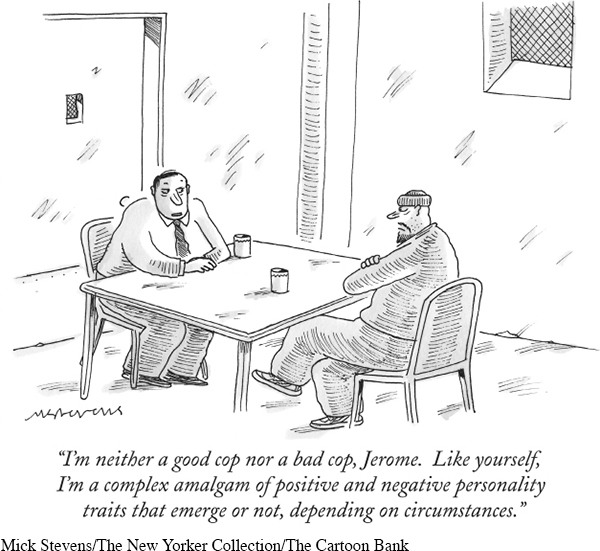Types of Characters
There are different terms that we use to categorize characters based on the function that they play in a work of literature. Many of these terms will likely be review for you.
The protagonist is the main character of a story, and it is the protagonist’s desire for justice, power, love, money, acceptance, and so on that drives the story’s plot. While oftentimes we think of the main character as the “hero” or “heroine” of a story, there are numerous examples from literature and film of protagonists who are not particularly good people. One such character is Shakespeare’s Macbeth; he is a power-
The antagonist is the character who opposes the protagonist’s actions. Sometimes the antagonist’s relationship to the protagonist is an obvious one—
Minor or supporting characters are those whose actions or personalities complement or contrast with those of the protagonist or antagonist. They might not be essential to the plot of the story, but they round out the world of the main characters. As author Stephen King says in his novel, Revival:
In one way, at least, our lives really are like movies. The main cast consists of your family and friends. The supporting cast is made up of neighbors, co-

All of these minor characters build the world of the story, and bring it to life.
One of the primary differences between main characters and minor characters is the amount of effort the author spends in developing them. Main characters tend to be round characters, meaning they have a certain amount of complexity and several traits that define them; they also tend to be dynamic, meaning that they change in some way over the course of the text. Minor characters often are flat characters defined by a single characteristic, such as the mean teacher or the dumb jock, and they are often static, meaning they remain essentially the same throughout the story. There are exceptions to every rule, of course. It might be tempting to think of flat or static characters as being products of bad or lazy writing, but most authors rely on a variety of character types to create their literary works.
A foil is a specific type of character that contrasts with the protagonist, and thus highlights one of his or her significant character traits. One well-
ACTIVITY
Working in a small group, think of a movie, novel, or television show that you all know well. List between five and eight characters and try to classify them according to the categories described on the previous pages. Then, explain what function each character serves within the text.
Individually, do the same exercise for a text that you have read in this chapter, or for another text you have read recently.